|
Books Should Be Free Loyal Books Free Public Domain Audiobooks & eBook Downloads |
|
|
Books Should Be Free Loyal Books Free Public Domain Audiobooks & eBook Downloads |
|
Top Authors |
|---|
|
Book type:
Sort by:
|
By: James Allen | |
|---|---|
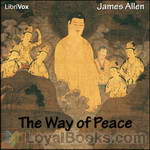 The Way of Peace
The Way of Peace
The Way of Peace is your guide to the power of meditation; self and truth; the acquirement of spiritual power; the realization of selfless love; entering into the infinite; saints, sages, and saviors; the law of service; and the realization of perfect peace. | |
By: Geoffrey Chaucer (c. 1343-1400) | |
|---|---|
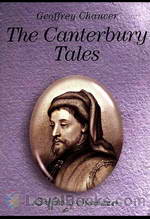 The Canterbury Tales
The Canterbury Tales
Anyone who has ever been on a package tour with a group of strangers who soon become friends, and passed time swapping stories with them, would instantly identify with this timeless classic of English literature. The Canterbury Tales by Geoffrey Chaucer recounts twenty different stories recounted by a diverse group of pilgrims who gather at The Tabard Inn in Southwark, near London, before setting out for the shrine of Thomas Becket in Canterbury. The Host of the inn proposes that they entertain themselves by telling stories along the route and the one who tells the best tale would win a prize – a meal at Bailey's tavern, sponsored by the losers... | |
By: Walt Whitman (1819-1892) | |
|---|---|
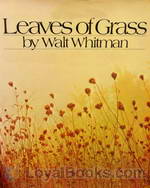 Leaves of Grass
Leaves of Grass
Nearly 160 years after it was first published, Walt Whitman's Leaves of Grass continues to inspire, enthrall and educate generations of readers. This collection of poems serves as a vehicle for Whitman's philosophy, ideals, love of nature and mystical musings and it subsequently became one of the corner stones of American literature. Whitman was inspired to write Leaves of Grass based on Ralph Waldo Emerson's clarion call for a truly American poet who would tell of its glories, virtues and vices... | |
 Specimen Days
Specimen Days
Specimen Days is essentially the great American poet Walt Whitman’s scrap book. It documents most of his life’s adventures, espeically his experience serving as a nurse during the Civil War and travelling around America. | |
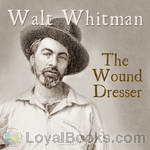 The Wound Dresser
The Wound Dresser
The Wound Dresser is a series of letters written from the hospitals in Washington by Walt Whitman during the War of the Rebellion to The New York Times, the Brooklyn Eagle and his mother, edited by Richard Maurice Burke, M.D., one of Whitman's literary executors. | |
 Drum-Taps
Drum-Taps
Drum Taps is the next collection of poems published by Walt Whitman after his famous Leaves of Grass. This collection is a direct response to Whitman's personal observations of the Civil War, many of which come from his volunteer efforts in wartime hospitals. Despite the miseries of war described, Whitman's poems in Drum Taps assert a steady patriotism in favor of Lincoln's war effort. Interestingly, the 1915 edition used for this reading includes an introduction from the Times Literary Supplement which draws analogies between the Civil War and the current throes of World War I, enlisting Whitman posthumously as a supporter of the Allied campaign against Germany. | |
 Song of the Broad-Axe - stanza 4
Song of the Broad-Axe - stanza 4
This Weekly Poem is an excerpt from Song of the Broad-axe (4th Stanza) by Walt Whitman, who was an American poet, essayist and journalist. A humanist, he was a part of the transition between transcendentalism and realism, incorporating both views in his works. Whitman is among the most influential poets in the American canon, often called the father of free verse. | |
By: Edgar Wallace (1875-1932) | |
|---|---|
 The Angel of Terror
The Angel of Terror
Conventional ideas of beauty are typically associate it with goodness and kindness. However, appearances can be deceptive. Jean Briggerland is exquisitely lovely, but few know that this ethereal, angelic facade hides an utterly immoral and cruel heart within. Her insatiable lust for power and money claim many an innocent victim till one day, a lawyer named Jack Glover is called upon to defend his best friend and cousin, James Meredith in a murder trial. Meredith is alleged to have murdered a young man in a fit of jealous rage because he objected to the man's friendship with Meredith's lovely fiancée... | |
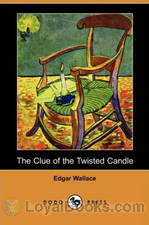 The Clue of the Twisted Candle
The Clue of the Twisted Candle
This story describes a house in Cadogan Square, London, in which extensive alterations have been done by the Greek owner. One of the rooms is built like a safe. The walls floor and roof are made of almost indestructible reinforced concrete. The only door to the room can only be opened or closed by the owner. The single window is unreachable and there is a steel safe built into the outer wall which is in plain sight of the local policeman who patrols the street every night. Yet it is in this barred and shuttered room that the Greek is found brutally murdered... | |
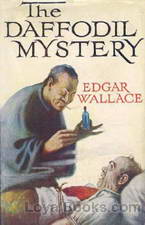 The Daffodil Mystery
The Daffodil Mystery
Set in England at the turn of the 20th century, Wallace’s crime novel The Daffodil Mystery follows the mysterious circumstances under which shop owner Lyne has been murdered. Accordingly, it is up to detective Jack Tarling and his trusted Chinese assistant to solve the case and reach an appropriate and just resolution. Moreover, the happenings within the novel are intensified by the colorful set of characters, which are marked by their plausible façade and contribute to the novel’s appeal... | |
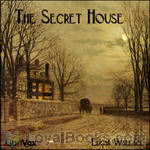 The Secret House
The Secret House
A stranger and foreigner arrives at the offices of a small publication in London only to be faced by the “editor” whose face is completely swathed in a veil. Nothing is as it seems, and it quickly becomes evident that both are bent on more than lively gossip about the elite. Blackmail and opportunism is the order of the day. When two men are found shot to death outside the door of Mr. Farrington the millionaire who just happens to live a few doors from T. B. Smith, the head of the secret police, the connections to blackmail are not long in coming. Were these men shot by the blackmailer? Who is actually what he seems to be? | |
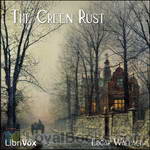 The Green Rust
The Green Rust
Edgar Wallace, perhaps best known for creating King Kong, wrote dozens of novels. The Green Rust, his twelfth crime novel, is one of three books he published in 1919. It begins at the English home of the severely ill American millionaire, John Millinborn. With him are his best friend, Kitson, and a local doctor, the Dutch (or is he?) van Heerden. He is murdered in the first chapter, having just left his fortune to his niece, Oliva, whom he has never met. Before he dies, he asks Kitson to find and watch over Oliva. (Introduction by Kirsten Wever) | |
By: Edith Nesbit (1858-1924) | |
|---|---|
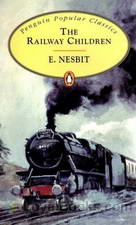 Railway Children
Railway Children
A thrilling spy story, a children's adventure, a charming portrait of early twentieth century life in London and the countryside and a heart warming family tale are all combined in this classic of children's literature The Railway Children by E Nesbit. The book has remained on the list of the best-loved children's books ever since it was first published as a serial story in The London Magazine in 1905. Later, it was published in book form and won acclaim from critics and readers across the world for its wonderful elements of character and plot... | |
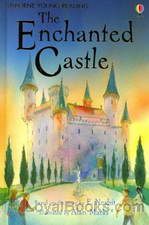 The Enchanted Castle
The Enchanted Castle
A children’s fantasy novel first published in 1907, The Enchanted Castle recounts the marvelous adventures encountered by a curious group of children searching to enliven their summer holiday. Written in episodes, the novel has a different adventure in store for its young heroes in each chapter, including vibrant statues, banquets with Greek gods, and reunited lovers. The novel begins when siblings Gerald, James and Kathleen are required to spend their summer holiday in a boarding school, due to unfortunate events at home and are consequently left under the supervision of a French schoolmistress... | |
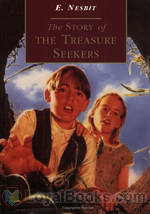 The Story of the Treasure Seekers
The Story of the Treasure Seekers
The six Bastable children are plunged into grief when their mother dies and their father's business partner cheats him of all his money. As a result, he loses not only his fortune but also his good name. However, the children decide to lend a hand. Determined to restore both, the children set out to find some way of making money. A variety of amusing and exciting events follow as they plunge into a series of scrapes in search of a legendary lost treasure. Published in 1899, The Story of the Treasure Seekers by E Nesbit was her first children's novel... | |
 Five Children and It
Five Children and It
The first book in the Psammead Trilogy, Five Children and It follows the fantastical adventures of five siblings who encounter an outlandish creature with a strange ability to grant wishes. Though the idea of having their wishes brought to life, the children quickly discover that not every wish turns out to be as wondrous as initially believed. The children’s novel offers a generous amount of fantasy, humor, and adventure, as the children are repeatedly subject to wishes gone amusingly awry. The magic begins when playful siblings Robert, Anthea, Cyril, Jane and their baby brother move to the countryside during the summer, not yet aware of the excitement to follow... | |
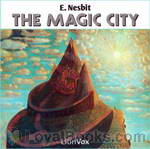 The Magic City
The Magic City
Philip and Lucy discover that the city Philip has built using toys, books and household objects, has come alive. This is the account of their incredible adventures in those magical lands, where they meet characters from books and history, mythical beasts, and many other nice (and not so nice) people and creatures. As with all Edith Nesbit’s tales, The Magic City has generous helpings of humour, imagination and interesting ideas, as well as the over-arching story of how a boy and girl who have unwillingly become step-brother and sister eventually learn to like each other. A story that works on many levels and will be equally enjoyed by adults and children. | |
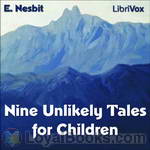 Nine Unlikely Tales for Children
Nine Unlikely Tales for Children
Nine original and, yes, unlikely fairy-tales, which include stories of the arithmetic fairy, the king who became a charming villa-residence and the dreadful automatic nagging machine. All are classic-Nesbit: charming, novel and not afraid to squeeze in a moral or two — told with proper fairy-tale style. Summary by Cori | |
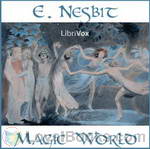 The Magic World
The Magic World
Talking cats, birds, fish and bells, wicked fairies, uglified princesses – adventure, magic, and more magic. A delightful collection of stories for children of all ages. The Magic World is an influential collection of twelve short stories by E. Nesbit. It was first published in book form in 1912 by Macmillan and Co. Ltd., with illustrations by H. R. Millar and Gerald Spencer Pryse. The stories, previously printed in magazines (like Blackie’s Children’s Annual), are typical of Nesbit’s arch, ironic, clever fantasies for children. | |
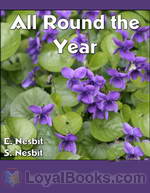 All Round the Year
All Round the Year
A light and whimsical collection of poems by the celebrated children’s author E Nesbit, in collaboration with Saretta Nesbit. | |
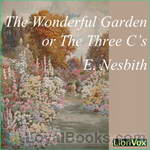 The Wonderful Garden or The Three C.'s
The Wonderful Garden or The Three C.'s
Do you believe in magic? Caroline, Charles and Charlotte do, and nothing that happens during their summer holiday at their great uncle's house does anything to diminish that belief. There the Three C.'s find a wonderful garden and some very old books, resulting in escapades which do not necessarily please the grown-ups.E. Nesbit, as usual, transports us back to the hazy summer days of a well-to-do Edwardian childhood, liberally spiced with magic, humour and lessons learned.Published exactly 100 years ago, this is one of her least-known children's books, out of print for many years, and with no text available online at the time of recording... | |
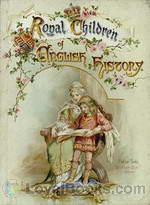 Royal Children of English History
Royal Children of English History
From the first chapter: “History is a story, a story of things that happened to real live people in our England years ago; and the things that are happening here and now, and that are put in the newspapers, will be history for little children one of these days. And the people you read about in history were real live people, who were good and bad, and glad and sorry, just as people are now-a-days.” E. Nesbit writes about some of the people behind the names, dates and battles of English History in this lovely book for older children. The original book contains some beautiful illustrations and you can see those by clicking the ‘Gutenberg’ link below. | |
 My School Days
My School Days
A short memoir about the author's school days, serialised in The Girl's Own Paper from October 1896 to September 1897. It includes stories about teachers, fellow pupils, the things that scared her most as a child (and even as an adult) and a vivid account of the best summer of her childhood.Summary by Cori Samuel. | |
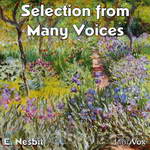 Many Voices (selection from)
Many Voices (selection from)
E. Nesbit (Edith Bland) was a prodigious 19th century children’s writer who produced over 60 books of fiction for children. This book of poems has many elements which would appeal to children but there’s also some exploration of her feelings of love, lust and longing which your average 10 year old would find downright yucky. There are also moments of joy, moments of sugary sweetness and moments of sharp insight in this collection which contains views from many angles. Recurring themes of love, death, gardens and fairies give us a fine insight into the lively imagination of E. Nesbit. Summary by Jim Mowatt. | |
By: Thornton W. Burgess (1874-1965) | |
|---|---|
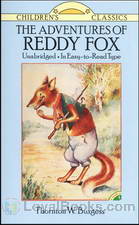 The Adventures of Reddy Fox
The Adventures of Reddy Fox
These delightful stories created by the writer known famously as the Bedtime Story Man provide hours of endless enjoyment for readers both young and old. His daily newspaper column which he wrote without a break from 1912 through to 1960 featured a host of engaging characters and their lively pranks and doings. In this charmingly illustrated volume, Reddy Fox, the young hero is sent to stay with his grandma. Grandmother Fox is the “wisest, slyest and smartest fox in all the country around” and she takes it upon herself to educate Reddy in the things that every fox should know! Thus begins a battle of wits between Farmer Brown, Farmer Brown's Boy, Reddy and Grandmother Fox... | |
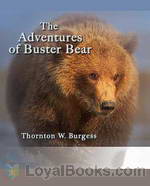 The Adventures of Buster Bear
The Adventures of Buster Bear
Known to generations of children and their parents as the Bedtime Story Man, Thornton Waldo Burgess wrote nearly two hundred much loved children's books. They were tales that recounted the doings of delightful characters who inhabited the Green Meadow and the Green Forest. Burgess, who was also an ardent conservationist besides being a writer and journalist shared his love of Nature and respect for all beings who share this earth with us. The Adventures of Buster Bear is a fun children's book that helps children understand that animals and the forest deserve respect and it is also a sincere call for responsible conservationism... | |
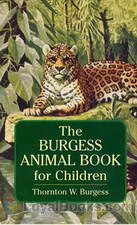 The Burgess Animal Book for Children
The Burgess Animal Book for Children
Peter Rabbit goes to school, with Mother Nature as his teacher. In this zoology book for children, Thornton W. Burgess describes the mammals of North America in the form of an entertaining story, including plenty of detail but omitting long scientific names. There is an emphasis on conservation. | |
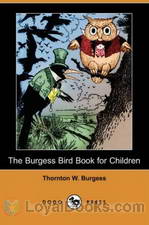 The Burgess Bird Book for Children
The Burgess Bird Book for Children
The Burgess Bird Book for Children is a zoology book written in the form of a story featuring Peter Rabbit. Peter learns from his friend Jenny Wren all about the birds of North America, and we meet many of them in the Old Orchard, the Green Meadow, and the Green Forest. | |
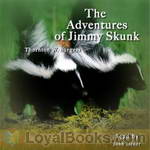 The Adventures of Jimmy Skunk
The Adventures of Jimmy Skunk
The Adventures of Jimmy Skunk is another in the long list children’s books by the conservationist, Thornton W. Burgess. In this book, Jimmy Skunk has encounters with Reddy Fox, Peter Rabbit, Unc’ Billy Possum and other acquaintances of his in the Green Meadows and Green Forest. Along the way, we learn some of the habits of Jimmy and his friends and we learn little lessons about life such as the importance of always keeping one’s temper, keeping promises and not playing practical jokes. We are also treated to a philosophical discussion by Jimmy Skunk on the advantages of defensive weaponry. | |
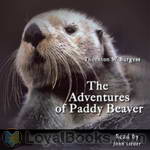 The Adventures of Paddy Beaver
The Adventures of Paddy Beaver
The Adventures of Paddy Beaver is another in the long list of children’s books by the conservationist, Thornton W. Burgess. In this book, the industrious and clever Paddy Beaver, a newcomer to the Green Forest, has encounters with Sammy Jay, Jerry Muskrat, Ol’ Man Coyote and other inhabitants of the Green Forest. Along the way, we learn how Paddy builds his dam and his house, and how he stores his food. We also learn little lessons about life, such as the importance of planning before doing, caring for Nature, trusting others, the benefits of working together and how wonderful it is to have a job one can sink one’s teeth into. | |
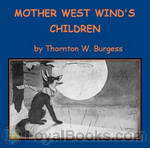 Mother West Wind's Children
Mother West Wind's Children
“You can’t fool old Mother Nature. No, Sir, you can’t fool old Mother Nature, and it’s of no use to try.” The animals of the Green Meadows and Green Forest have little adventures while Grandfather Frog tells stories to Mother West Wind’s children, the Merry Little Breezes. | |
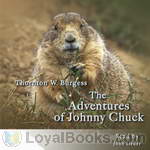 The Adventures of Johnny Chuck
The Adventures of Johnny Chuck
The Adventures of Johnny Chuck is another in the long list of children’s books by conservationist Thornton W. Burgess. In this story, it is spring time and a young chuck’s fancy turns to thoughts of … traveling, protecting one’s turf, finding a new home, and yes, love. Along the way, we learn little lessons about life such as there are good and bad kinds of pride, the importance of keeping secrets and that, even in the animal world, the three most important factors in determining the desirability of property are “location, location, location.” | |
 Old Mother West Wind
Old Mother West Wind
Thornton Waldo Burgess (January 14, 1874 – June 5, 1965) was a conservationist and author of children’s stories. He loved the beauty of nature and its living creatures so much that he wrote about them for 50 years. By the time he retired, he had written more than 170 books. Many of his outdoor observations in nature were used as plots for his stories. In his first book, “Old Mother West Wind,” published in 1910, the reader meets many of the characters found in later books and stories. These... | |
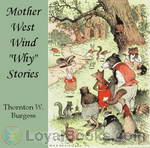 Mother West Wind 'Why' Stories
Mother West Wind 'Why' Stories
Thornton W. Burgess was a conservationist and prolific author of children’s books. His gently humorous stories about the animals of the meadows and woods teach little lessons about getting along with others; they are perfect bedtime stories for small children. | |
By: Dante Alighieri (1265-1321) | |
|---|---|
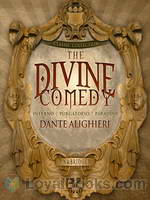 The Divine Comedy
The Divine Comedy
The Divine Comedy (Italian: Commedia, later christened “Divina” by Giovanni Boccaccio), written by Dante Alighieri between 1308 and his death in 1321, is widely considered the central epic poem of Italian literature, the last great work of literature of the Middle Ages and the first great work of the Renaissance. A culmination of the medieval world-view of the afterlife, it establishes the Tuscan dialect in which it is written as the Italian standard, and is seen as one of the greatest works of world literature... | |
By: Julian Hawthorne, editor | |
|---|---|
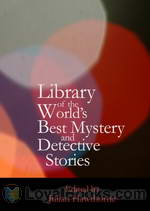 Library of the World's Best Mystery and Detective Stories
Library of the World's Best Mystery and Detective Stories
The Library of the World's Best Mystery and Detective Stories is a six-volume edition, which contains one hundred and one tales written by authors as diverse and separated by history as Pliny the Younger (first century AD), Voltaire (17th century) and Guy de Maupassant (19th century) and also from different parts of the world. This volume which is the first, contains twenty interesting stories, and an introduction by the editor. The fascinating aspect of mystery stories is that sometimes the author allows the puzzle to solve itself without expert detective aid, while in other cases, a sleuth bends his or her deductive powers to the mystery... | |
By: Jean-Jacques Rousseau (1712-1778) | |
|---|---|
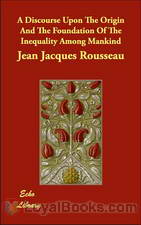 A Discourse Upon the Origin and the Foundation of the Inequality Among Mankind
A Discourse Upon the Origin and the Foundation of the Inequality Among Mankind
This work presents Rousseau’s belief in the profoundly transformational effects of the development of civilization on human nature, which Rousseau claims other political philosophers had failed to grasp. Specifically, before the onset of civilization, according to Rousseau, natural man lived a contented, solitary life, naturally good and happy. It is only with the onset of civilization, Rousseau claims, that humans become social beings, and, concomitant with their civilization, natural man becomes corrupted with the social vices of pride, vanity, greed and servility. | |
 The Social Contract
The Social Contract
The Social Contract outlines Rousseau’s views on political justice, explaining how a just and legitimate state is to be founded, organized and administered. Rousseau sets forth, in his characteristically brazen and iconoclastic manner, the case for direct democracy, while simultaneously casting every other form of government as illegitimate and tantamount to slavery. Often hailed as a revolutionary document which sparked the French Revolution, The Social Contract serves both to inculcate dissatisfaction with actually-existing governments and to allow its readers to envision and desire a radically different form of political and social organization. (Summary by Eric Jonas) | |
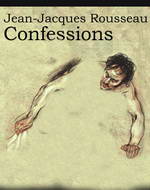 Confessions
Confessions
Considered to mark the emergence of a new literary form, the unvarnished autobiography, Confessions by Jean-Jacques Rousseau was first published in 1782, four years after his death. The philosopher and educationist whose political philosophy is credited with having inspired the French Revolution, Rousseau was a man of immense wit, talent and depth of thinking. His skill in art, music, literature and cooking along with his magnificent body of work in philosophy, politics, education and sociology have made him a legendary figure... | |
By: Abraham Lincoln (1809-1865) | |
|---|---|
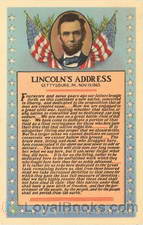 The Gettysburg Address
The Gettysburg Address
Lincoln's Gettysburg Address, given November 19, 1863 on the battlefield near Gettysburg, Pennsylvania, USA Four score and seven years ago, our fathers brought forth upon this continent a new nation: conceived in liberty, and dedicated to the proposition that all men are created equal. Now we are engaged in a great civil war. . .testing whether that nation, or any nation so conceived and so dedicated. . . can long endure. We are met on a great battlefield of that war. We have come to dedicate a portion of that field as a final resting place for those who here gave their lives that this nation might live... | |
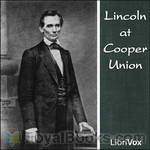 Lincoln at Cooper Union
Lincoln at Cooper Union
On 27 February 1860, Abraham Lincoln gave this address at the Cooper Union in New York City. When he gave the speech, Lincoln was considered by many to be just a country lawyer. After he gave the speech, he soon became his party’s nominee for president. | |
By: Aristotle (384-322) | |
|---|---|
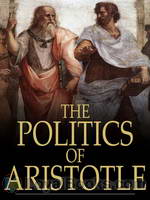 Politics
Politics
The Politics, by the ancient Greek philosopher Aristotle, is one of the most influential texts in political philosophy. In it, Aristotle explores the role that the political community should play in developing the virtue of its citizens. One of his central ideas is that “Man is a political animal,” meaning that people can only become virtuous by active participation in the political community. Aristotle also criticizes his teacher Plato, classifies and evaluates six different types of constitutions and political institutions, and describes his vision of the ideal state... | |
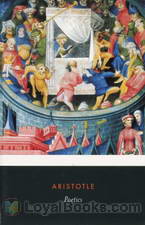 Poetics
Poetics
Aristotle’s Poetics from the 4th century B.C. aims to give a short study of storytelling. It discusses things like unity of plot, reversal of situation, and character in the context of Greek tragedy, comedy and epic poetry. But it still applies today. It is especially popular with screenwriters as seen in many script gurus’ how-to books. | |
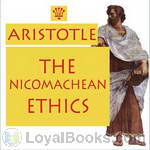 The Nicomachean Ethics
The Nicomachean Ethics
The work consists of ten books, originally separate scrolls, and is understood to be based on notes said to be from his lectures at the Lyceum which were either edited by or dedicated to Aristotle's son, Nicomachus. In many ways this work parallels the similar Eudemian Ethics, which has only eight books, and the two works can be fruitfully compared. Books V, VI, and VII of the Nicomachean Ethics are identical to Books IV, V, and VI of the Eudemian Ethics. Opinions about the relationship between the two works, for example which was written first, and which originally contained the three common books, is divided... | |
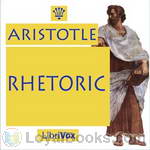 Rhetoric
Rhetoric
The Rhetoric was developed by Aristotle during two periods when he was in Athens, the first between 367 to 347 BCE (when he was seconded to Plato in the Academy), and the second between 335 to 322 BCE (when he was running his own school, the Lyceum). The Rhetoric consists of three books. Book I offers a general overview, presenting the purposes of rhetoric and a working definition; it also offers a detailed discussion of the major contexts and types of rhetoric. Book II discusses in detail the three means of persuasion that an orator must rely on: those grounded in credibility (ethos), in the emotions and psychology of the audience (pathos), and in patterns of reasoning (logos)... | |
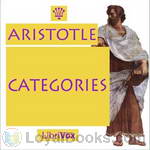 Categories
Categories
Categories is the first of Aristotle's six texts on logic which are collectively known as the Organon. In Categories, Aristotle enumerates all the possible kinds of things that can be the subject or the predicate of a proposition. Aristotle places every object of human apprehension under one of ten categories (known to medieval writers as the praedicamenta). Aristotle intended them to enumerate everything that can be expressed without composition or structure, thus anything that can be either the subject or the predicate of a proposition. The ten categories, or classes, are: Substance, Quantity, Quality, Relation, Place, Time, Position, State, Action and Affection. | |
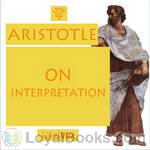 On Interpretation
On Interpretation
Aristotle's On Interpretation (Greek Peri Hermeneias) or De Interpretatione (the Latin title) is the second of Aristotle's six texts on logic which are collectively known as the Organon. On Interpretation is one of the earliest surviving philosophical works in the Western tradition to deal with the relationship between language and logic in a comprehensive, explicit, and formal way. The work begins by analyzing simple categoric propositions, and draws a series of basic conclusions on the routine... | |
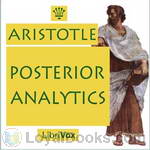 Posterior Analytics
Posterior Analytics
Posterior Analytics is the fourth of Aristotle's six texts on logic which are collectively known as the Organon ("Instrument"). Posterior Analytics deals with demonstration, definition, and scientific knowledge. Demonstration is distinguished as a syllogism productive of scientific knowledge, while Definition is marked as the statement of a thing's nature, a statement of the meaning of the name, or of an equivalent nominal formula. | |
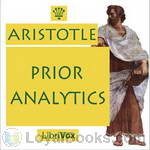 Prior Analytics
Prior Analytics
Prior Analytics is the third of Aristotle's six texts on logic which are collectively known as the Organon ("Instrument"). In Prior Analytics Aristotle conducts a formal study of arguments. In logic an argument is a series of true or false statements which lead to a true or false conclusion. Aristotle identifies valid and invalid forms of arguments called syllogisms. A syllogism is an argument consisting of three sentences: two premises and a conclusion. Of the entire Aristotelian corpus, Aristotle gives priority to the study of his treatises on Logic. | |
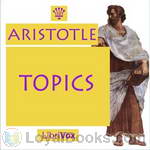 Topics
Topics
The Topics is is the fifth of Aristotle's six texts on logic which are collectively known as the Organon ("Instrument"). The Topics constitutes Aristotle's treatise on the art of dialectic—the invention and discovery of arguments in which the propositions rest upon commonly-held opinions or endoxa. Topoi are "places" from which such arguments can be discovered or invented. In his treatise on the Topics, Aristotle does not explicitly define a topos, though it is "at least primarily a strategy for argument not infrequently justified or explained by a principle." | |
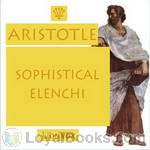 Sophistical Elenchi
Sophistical Elenchi
De Sophisticis Elenchis is the sixth of Aristotle's six texts on logic which are collectively known as the Organon ("Instrument"). In De Sophisticis Elenchis Aristotle identifies 13 falacies. Verbal Fallacies are: Accent or Emphasis; Amphibology; Equivocation; Composition; Division and Figure of Speech. Material Fallacies are: Accident; Affirming the Consequent; Converse Accident; Irrelevant Conclusion; Begging the Question; False Cause and Fallacy of Many Questions. | |
By: Nathaniel Hawthorne (1804-1864) | |
|---|---|
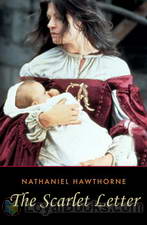 The Scarlet Letter
The Scarlet Letter
A beautiful woman who is punished for the mortal sin of loving a man other than her husband, a cowardly lover, a vengeful husband, a rebellious illegitimate child and the oppressive and patriarchal morality of 17th century Puritanism in Boston. Together these form an unforgettable and thought-provoking glimpse of how much social attitudes have changed over the centuries. Nathaniel Hawthorne was the creator of such beloved works as Twice-Told Tales, A Wonder Book for Boys and Girls, The House of the Seven Gables and spine-chilling tales like Roger Malvin's Burial... | |
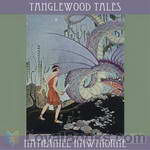 Tanglewood Tales
Tanglewood Tales
A sequel to Nathaniel Hawthorne's earlier volume of Greek mythology interpreted and retold for young people, Tanglewood Tales includes more legends and tales of ancient heroes and monsters. In his earlier book, A Wonder-Book for Girls and Boys, Hawthorne had designed the book to be a book within a book. A young college student keeps a group of young children entertained by retelling Greek myths in a way in which they can easily understand. Nathaniel Hawthorne also wrote a brief introduction to Tanglewood Tales, entitled The Wayside... | |
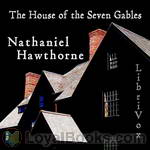 The House of the Seven Gables
The House of the Seven Gables
“The wrongdoing of one generation lives into the successive ones and… becomes a pure and uncontrollable mischief.” Hawthorne’s moral for “The House of the Seven Gables,” taken from the Preface, accurately presages his story. The full weight of the gloomy mansion of the title seems to sit on the fortunes of the Pyncheon family. An ancestor took advantage of the Salem witch trials to wrest away the land whereon the house would be raised… but the land’s owner, about to be executed as a wizard, cursed the Pyncheon family until such time as they should make restitution... | |
 Rappaccini's Daughter
Rappaccini's Daughter
The story is set in Padua in a distant, but unspecified past. From his quarters, Giovanni, a young student of letters, observes Beatrice, the beautiful daughter of Dr. Rappaccini, a scientist working in isolation. Beatrice is confined to the lush and locked gardens filled with poisonous plants by her father. Having fallen in love, Giovanni enters the garden and meets with Beatrice a number of times regardless of the warning of his mentor, Professor Baglioni, that Rappaccini is up to no good and he and his work should be avoided. | |
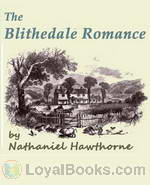 The Blithedale Romance
The Blithedale Romance
The Blithedale Romance is the story of four principal characters who work with -- and sometimes against -- each other on Blithedale, a communal farm antecedent to those that sprang up later in the 1960s, and similar to one on which Hawthorne himself lived in 1841. These communes arose out of the pressures on society and the individual brought by the Industrial Revolution. Some were organized around religious philosophies, some were secular. Among the secularists, the Transcendental movement mentioned in the novel espoused the idea that the individual's intuition, rather than religious dogma, was the true path to spiritual enlightenment... | |
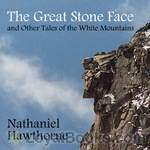 The Great Stone Face and Other Tales of the White Mountains
The Great Stone Face and Other Tales of the White Mountains
A collection of four short stories by Nathaniel Hawthorne, the common theme of which is New Hampshire's White Mountains. Consists of: The Great Stone Face, written in 1850 and revolves around the 'Old Man of the Mountain (Cannon Mtn.) in New Hampshire which sadly collapsed on May 3, 2003; The Ambitious Guest, written in 1835; The Great Carbuncle, written in 1837; and Sketches From Memory, written sometime prior to The Great Carbuncle as will become obvious. | |
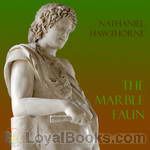 The Marble Faun
The Marble Faun
The Marble Faun is Hawthorne's most unusual romance. Writing on the eve of the American Civil War, Hawthorne set his story in a fantastical Italy. The romance mixes elements of a fable, pastoral, gothic novel, and travel guide. In the spring of 1858, Hawthorne was inspired to write his romance when he saw the Faun of Praxiteles in a Roman sculpture gallery. The theme, characteristic of Hawthorne, is guilt and the Fall of Man. The four main characters are Miriam, a beautiful painter who is compared... | |
 True Stories from History and Biography
True Stories from History and Biography
In writing this ponderous tome, the author's desire has been to describe the eminent characters and remarkable events of our annals, in such a form and style, that the YOUNG might make acquaintance with them of their own accord. For this purpose, while ostensibly relating the adventures of a Chair, he has endeavored to keep a distinct and unbroken thread of authentic history. The Chair is made to pass from one to another of those personages, of whom he thought it most desirable for the young reader to have vivid and familiar ideas, and whose lives and actions would best enable him to give picturesque sketches of the times... | |
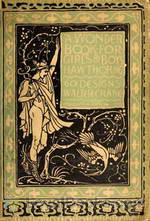 Wonder Book for Girls and Boys
Wonder Book for Girls and Boys
A Yankee student stays at a country house called Tanglewood during a golden New England fall. Also at the house are about a dozen children: younger cousins of the student and their friends of varying ages. The student, as much to amuse himself as to amuse the children, organises games and activities and tells stories. And the stories he tells are wild and fantastic. When his store of fairy tales and folk legends is exhausted he hits on the idea of retelling Greek Myths in his own style.We visit Tanglewood... | |